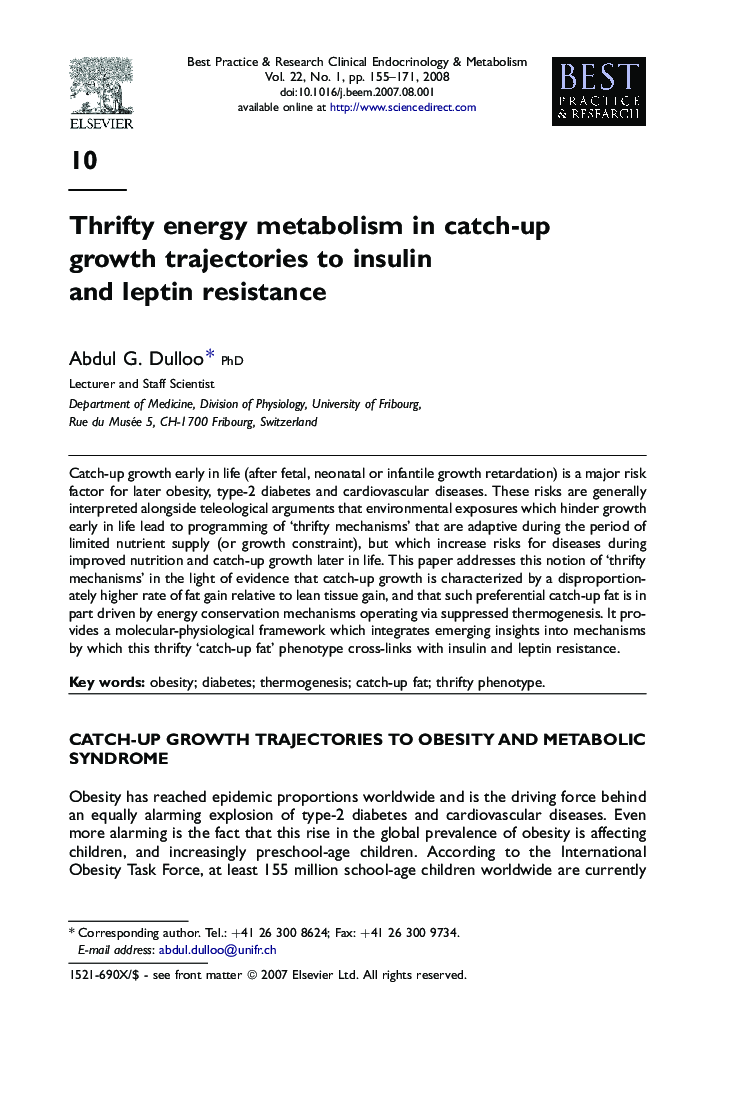| Article ID | Journal | Published Year | Pages | File Type |
|---|---|---|---|---|
| 2791843 | Best Practice & Research Clinical Endocrinology & Metabolism | 2008 | 17 Pages |
Catch-up growth early in life (after fetal, neonatal or infantile growth retardation) is a major risk factor for later obesity, type-2 diabetes and cardiovascular diseases. These risks are generally interpreted alongside teleological arguments that environmental exposures which hinder growth early in life lead to programming of ‘thrifty mechanisms’ that are adaptive during the period of limited nutrient supply (or growth constraint), but which increase risks for diseases during improved nutrition and catch-up growth later in life. This paper addresses this notion of ‘thrifty mechanisms’ in the light of evidence that catch-up growth is characterized by a disproportionately higher rate of fat gain relative to lean tissue gain, and that such preferential catch-up fat is in part driven by energy conservation mechanisms operating via suppressed thermogenesis. It provides a molecular-physiological framework which integrates emerging insights into mechanisms by which this thrifty ‘catch-up fat’ phenotype cross-links with insulin and leptin resistance.
